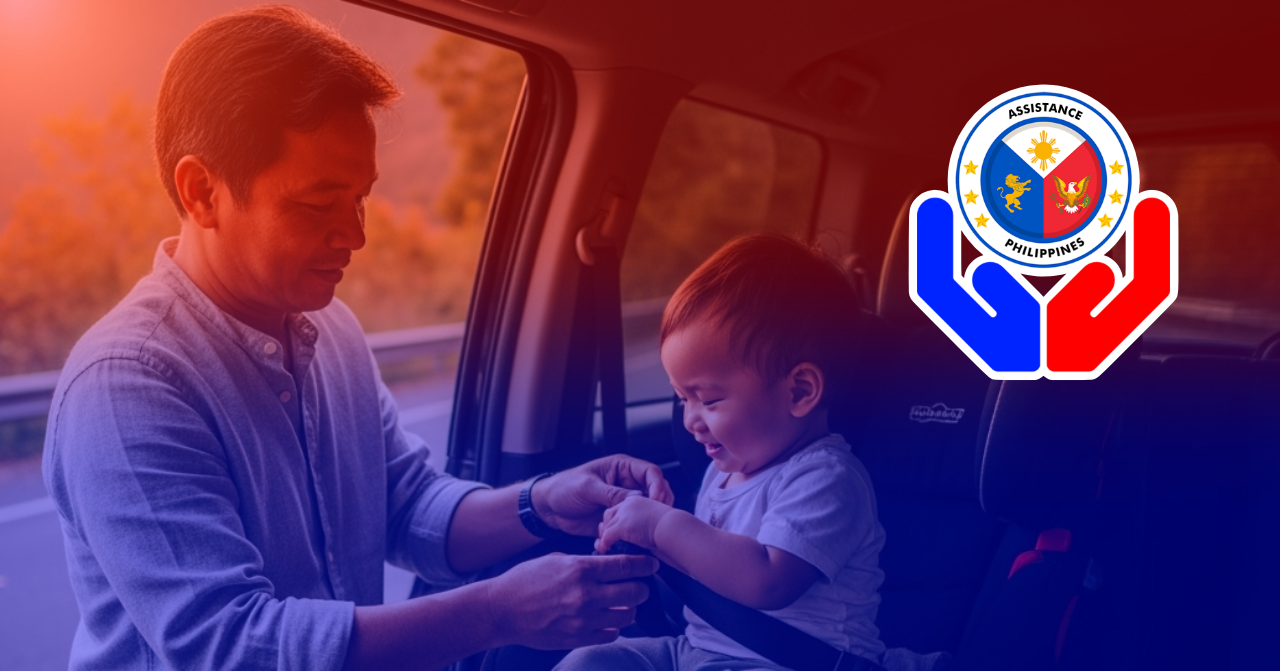If you drive with your kids in the car, you need to know this: Republic Act No. 11229, or the Child Safety in Motor Vehicles Act, is now in full effect. It requires all children aged 12 and below or shorter than 4’11” (150 cm) to be properly secured in a child restraint system (CRS) when riding in a private vehicle.
This law isn’t just a formality; it’s a direct response to the rising number of road accidents involving children in the country. It took effect on February 2, 2021, and aims to save young lives.
Let’s break it down so you know exactly what to do and what to avoid.

Who Must Use Child Car Seats?
The law applies to:
- All children aged 12 and below
- Any child shorter than 4’11” (150 cm)
These children must be secured in the back seat using a proper CRS, based on their height and age. Even if a child is over 12 but still under 150 cm, they are not allowed in the front seat unless they’re correctly secured with a seatbelt and meet the height requirement.
Here’s a simple chart to guide you:
| Child’s Age/Height | Recommended CRS |
| 0–15 months | Rear-facing car seat |
| Below 100–105 cm | Rear-facing car seat |
| 105–125 cm | Booster seat with backrest |
| 125–150 cm | Booster cushion (backrest optional) |
| 150 cm or taller | Regular seat belt (no CRS needed) |
Important: Children under 15 months must always be in a rear-facing seat for better head and neck support.
Penalties for Non-Compliance
Getting caught without a proper child car seat has serious consequences. Here are the fines:
- 1st offense: ₱1,000
- 2nd offense: ₱2,000
- 3rd and subsequent offenses: ₱5,000 + 12-month driver’s license suspension
Using a non-standard or uncertified CRS? That’s a bigger issue:
- ₱50,000 to ₱100,000 per violation
Leaving a child alone in the car? That’s also punishable—even if the child is in a car seat.
Only Certified Car Seats Are Allowed
Not all child seats are created equal. Under RA 11229, only those with a PS (Philippine Standard) Quality or Safety Mark or ICC (Import Commodity Clearance) from the DTI are allowed.
Make sure the CRS you use clearly shows:
- Manufacturer’s name and trademark
- Country of origin
- Serial number and year of production
- Installation and usage instructions
Warning: Fake, altered, or tampered certification stickers will be penalized separately.
Where to Get Help with Installation
Proper installation is just as important as using the right seat. Some common tips:
- Keep harness straps tight and untwisted
- Shoulder straps must run across the chest, not the neck
- Lap belts should lie low on the hips or thighs—not on the belly
Many newer vehicles come with ISOFIX anchor points to make installation easier. If you need help, you can:
- Visit an LTO branch or authorized vehicle inspection center
- Ask help from baby shops or auto supply stores that offer CRS installation support
Installation help and inspections from LTO are free of charge.
Are There Any Exemptions?
Yes, but only a few:
- Public utility vehicles like jeepneys, buses, and taxis are currently exempt.
However, the law allows further studies that may include them in the future. - Children with medical conditions that make CRS use risky may be exempted—but only with a physician’s certificate.
- Regardless of CRS use, never leave a child alone in a vehicle—even for a short time.
Why RA 11229 Matters
Road crashes remain one of the leading causes of death among children in the Philippines. Globally, using properly installed child car seats can reduce injury or death risk by:
- Over 70% for infants
- Between 54% to 80% for children
That’s a massive difference—and a powerful reason to follow the law.
Final Reminder
RA 11229 is clear:
✔️ Use a certified child car seat
✔️ Follow age and height guidelines
✔️ Install it properly
✔️ Never leave a child unattended in a vehicle
✔️ Know the penalties—they’re steep, especially for repeated offenses
Keeping our kids safe isn’t just a responsibility—it’s now the law.
Frequently Asked Questions
Is this law applicable to taxis or Grab cars?
No, public utility vehicles are currently not covered. However, the law may expand in the future.
Can I use a secondhand car seat?
Only if it has the original PS or ICC certification mark and is still in good condition.
What if my child is already 12 but still under 150 cm?
They must continue to use a CRS in the back seat. Height takes priority for safety.
Where can I report violations or ask more questions?
You can contact your nearest LTO branch or visit the official DTI and LTO websites.
Video: CHILD CAR SEAT or Child Restraint System (CRS) in the Philippines
RA 11229 sets the rules straight—kids under 12 must ride with a proper child car seat in private vehicles.
Parents now face fines and license suspensions if they skip the setup or use low-quality gear.
The video walks through the Akeeva Rota 360 ISOFIX, showing how its rotating seat and secure latches protect children from day one.
Rear-facing seats give newborns better shielding, while forward-facing setups suit older kids with the right height and weight.
It’s not just about following rules—it’s about giving children the protection they deserve every time the engine starts.
